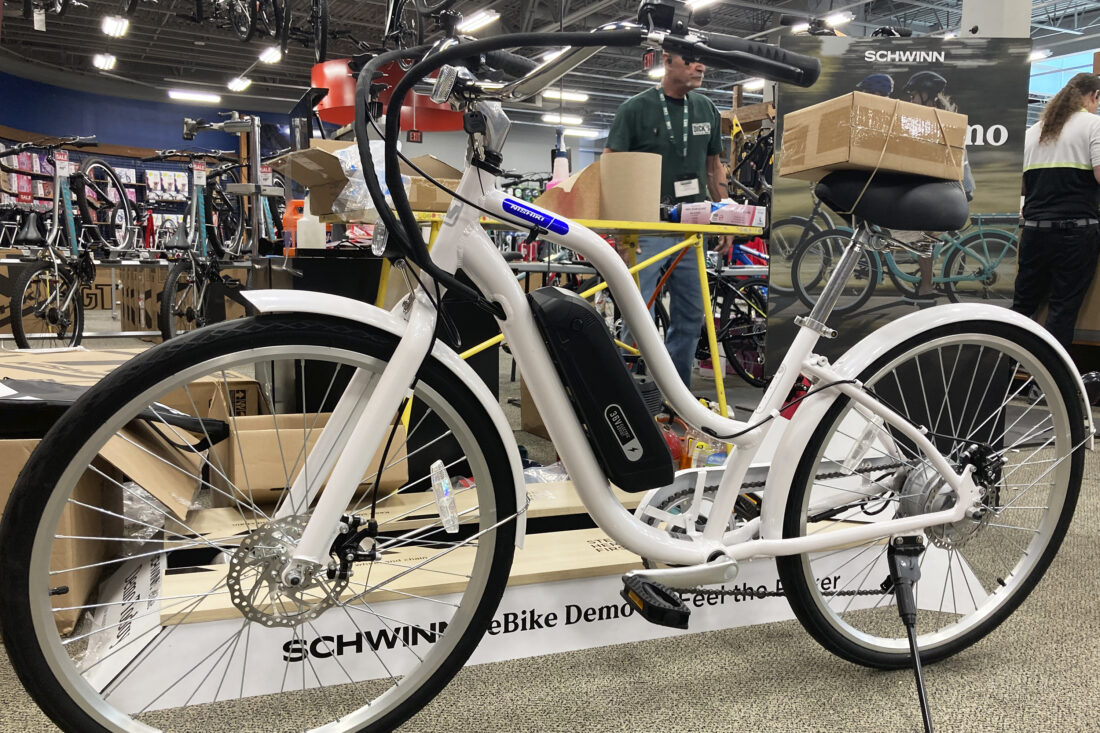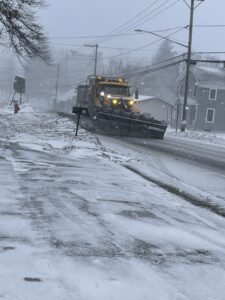E-bikes bring new cycle of challenges

AP Photo Growing numbers of electric bicycles on the road has brought safety concerns in the region and here at home.
Residents and communities across the region are starting to become charged up over the growing number of electric bicycles — many of which are sharing the roads on a regular basis with motorists. Though a majority of the riders are courteous and responsible, those who weave in and out of traffic without helmets can be an added stress to drivers.
In New York, municipalities have a final say regarding regulations for e-bikes. State law notes operators can “use these devices on highways with a posted speed limit of 30 mph or less. Municipalities can further regulate the time, place, and manner of operation of these devices.” In addition, the motorized cycles cannot be on a sidewalk except as authorized by local law or ordinance.
Helmets are required for those 16 and 17. For all other riders, head protection is strongly encouraged.
At the moment, there are few, if any, regulations regarding motorbikes by municipalities within Chautauqua County. Only recently have some Erie County entities begun to act.
According to The Buffalo News, the Clarence Town Board wants to give law enforcement the ability to impound e-bikes and scooters if riders are not abiding by the laws.
East Aurora also is considering giving its police the authority to write citations to parents whose children are caught riding irresponsibly.
These actions come after at least two e-bike riders died after they were hit by vehicles in Erie County. Most recently, a 10-year-old girl riding an e-scooter was hospitalized after she was struck by a vehicle in Niagara Falls last month.
Closer to home, municipal boards have been faced with putting greater focus on fiscal challenges rather than quality-of-life concerns. But both Jamestown and Warren, Pa., have heard concerns regarding the motorized bikes.
Scott Axelson, who co-authors commentary pieces in both the OBSERVER and The Post-Journal, told Jamestown City Council this month that it is getting tougher to navigate
a number of streets. “The e-bike, e-scooter situation is out of control,” he said earlier this month. “I’m in the city driving around all of the time. I am so worried about hitting somebody, because it’s my liability, but we’re doing nothing to work to try to make changes to make these riders understand the right-of-ways because a lot of these e-bikes are going as fast as motorcycles, 30 miles an hour speed limit.”
Warren, Pa., City Council heard similar concerns this week and involved its Police Chief Joe Sproveri in the dialogue with those who spoke. Sproveri said toward the conclusion of the discussion that the department would stick with the city code, enforce infractions and look into legislature at the state level offering a “happy medium.”
With growing numbers taking to the e-bikes, there are worries the mode of transportation is becoming a “public health hazard,” as noted by an article by the American College of Surgeons last summer. Though the article notes benefits that are economical and environmentally friendly, there is a flip side.
“Higher e-bike speeds reduce reaction time for riders to avoid potential collisions,” the article notes. “Attractive styling, naming, and bicycle-like appearance may not convey these risks to younger riders or parents. Special caution should be exercised in traffic and when traveling downhill, as the heavier battery can lead to faster acceleration and loss of control.”
Statistics appear to bear this out. Harvard Health Publishing noted in an article that the National Electronic Injury Surveillance System found that roughly 235,000 e-bike riders and e-scooter riders sought care in emergency rooms over a six-year period. E-bike injuries more than doubled every year, going from 751 in 2017 to 23,493 in 2022. E-scooter injuries increased by more than 45% every year, going from 8,566 in 2017 to 56,847 in 2022.
Giving the alternative motorist a safer path on area roads is the concept behind the Complete Streets initiative that has been part of the conversation in Chautauqua County for nearly a decade. It allows for a defined bike lane that separates cars and trucks from those on two-wheel vehicles.
Washington Street in Jamestown is a shining example of this. Two years ago, the city road went from four lanes to three with a turning lane. This option not only calmed traffic, it also allowed those using pedal power or the electric option a lane that does not interfere with vehicles.
It has been a tremendous upgrade in terms of safety.
Vineyard and Millard Fillmore Drives in the town of Dunkirk are being considered for a similar makeover in the future. A new format would allow the different modes of travel to co-exist with fewer disruptions.
Those road patterns benefit e-bikers, scooters as well as cars and trucks. But until more area roads become more accessible, it is up to municipal leaders to look at laws that curb the risks of injuries that are becoming a trend throughout the nation.
John D’Agostino is editor of The Post-Journal, OBSERVER and Times Observer in Warren, Pa. Send comments to jdagostino@observertoday.com or call 716-487-1111, ext. 253.




